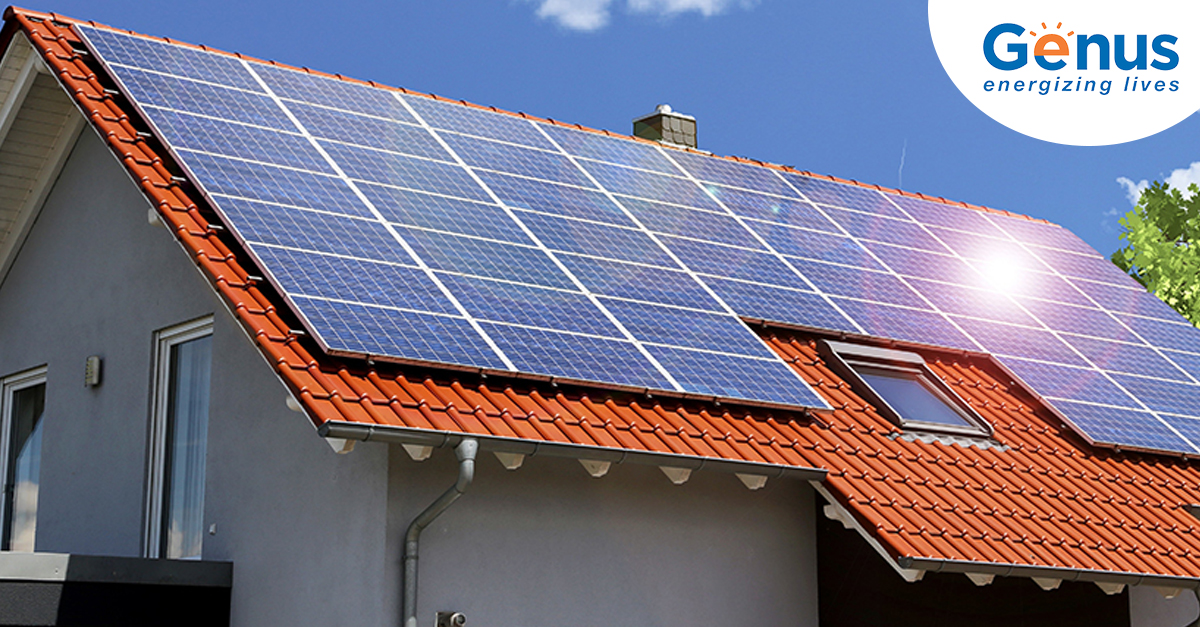
Solar panels are a great way to harness unlimited energy from the sun without causing any pollution. However, to make the most of solar panels, users need to learn about where and how to place the panels in a way so that they produce the maximum possible energy when the sun is shining.
The key challenge in determining the ideal solar panel’s roof direction is that the sun is in constant motion while the panels are fixed. As you read on, you will find discover how you can resolve this issue and get key insights on the optimal orientation for solar panels.
Possible Solar Panel Orientations
The angle at which you need to place solar panels is determined by the sun’s position in the sky, which is determined by using two types of angles, namely azimuth and zenith. Once the sun’s position is found, the panels are placed perpendicular to it so that they can absorb maximum sunlight.
Understanding Azimuth and Zenith
To determine the optimal solar panel orientation, you should know about:
(a) Azimuth Orientation
This refers to the compass angle of the sun during its movement from east to west in the sky. Notably, when the azimuth angle is 0, it is referred to as the solar noon. During this time, the sun is directly north in the southern hemisphere and directly south in the northern hemisphere.
The azimuth angle is like a compass direction with North = 0° and South = 180°
The latitude and time of year are what determines the optimum roof angle for solar panels.
(b) Zenith Orientation
The zenith angle is the angle between the sun and the vertical.
The point at which the sun appears to us varies throughout the day, with the sun reaching the peak elevation during midday.
Both the azimuth and zenith angles can be found on a premade solar chart and used to orient the solar panel for maximum efficiency.
Solar Panel Orientation and Tilt
To generate the highest amount of electricity possible from your panels, you need to mount them at an angle that ensures they point directly at the sun all the time. Also, for the best house direction for solar panels, they need to be turned towards the terrestrial equator using a compass.
Apart from this, the panel is to be oriented in a manner that ensures that shade from nearby structures doesn’t fall on it. If the light reaching a panel is obstructed by a building, wall, or another solar panel, your solar system is bound to lose efficiency.
Also Read: Top Ways to Protect Solar Panels During the Rainy Season
When it comes to the best roof orientation for solar panels, it is recommended that the PV panels be installed at an angle perpendicular to the sun. For example, in the northern hemisphere, during the winter, the sun is low, making it reasonable for the panels to be installed at a steep angle of 45 degrees. Similarly, when the sun is high during summer, the angle should be maintained at 10 degrees, and rest keep panel at an angle whatever is the latitude of location.
Ensuring Optimal Solar Panel Position Automatically
A solar tracker is a somewhat costly option for ensuring maximum solar panel efficiency at all points of the day with the optimal solar panel orientation. However, with the right solar tracker, you can ascertain the sun’s position at all times to adjust your solar panels, even accounting for seasonal variations.
Also Read: Precautions for the Safe Installation of Solar Panels
It is worth noting that the solar tracker can follow the sun’s rotational path year-round due to a motor-driven mount. For a cost-effective solution, you can use a single bearing mount that allows you to manually orient the panel optimally throughout the day.
By using a tracker to identify the best direction for solar panels on the roof, you can increase the panel’s sunlight exposure substantially, even up to 30 percent.
Conclusion
To get the maximum efficiency out of your solar panels, you need to know the best direction and angle for the solar panel. To ensure that the PV cells are producing the maximum possible amount of energy for the maximum amount of time when the sun is up, you can consider using solar trackers.
To get more expert guidance on the best direction for solar panels, you can always reach us.
